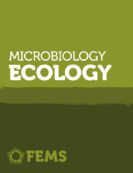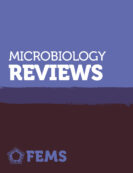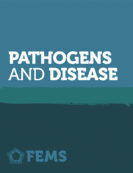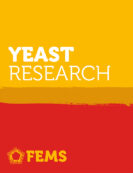Pathogens and Disease Poster Prize: Werner Ouwendijk
European Congress of Virology 2019
The European Congress of Virology took place in Rotterdam, The Netherlands, from 28th April to 1st May 2019. The meeting bought together scientists from across the Virosphere, ranging from basic to clinical virology, mixing medical, veterinary, wildlife, invertebrate and plant virology. Pathogens and Disease awarded a prize for the best poster presentation at the meeting to Werner Ouwendijk. Read more about Werner’s research below.
Werner Ouwendijk
What is your current position, and what was your scientific journey to get there?
My scientific journey started with studying Biomedical Sciences at the Leiden University Medical Center (Leiden, the Netherlands), where I obtained my BSc and MSc degrees and became interested in the field of Virology. Therefore, I decided to do my PhD at the department of Virology of the Erasmus Medical Center (Rotterdam, the Netherlands), working on the pathogenesis and immunobiology of varicella-zoster virus (VZV) – the causative agent of chickenpox and shingles, frequently accompanied by chronic pain. Exciting results led to co-writing a follow-up grant application that was awarded, enabling me to perform my postdoctoral studies at the same institute.
In addition to the pathogenis work, my scientific research broadened to studying more fundamental aspects of VZV biology and especially VZV latency. Currently, I am working as a staff scientist at the department of Viroscience (Erasmus Medical Center, Rotterdam, the Netherlands), where I study the molecular biology of human alphaherpesviruses and aim to understand how these viruses are able to establish lifelong latent infections in human cells.”
Could you describe the research your poster covered?
My poster was entitled “Temporal analysis of virus and host proteomes reveals a conserved role of epidermal growth factor receptor signaling in lytic HSV-1 and VZV infection”. This research studied the closely related human alphaherpesviruses herpes simplex 1 (HSV-1) and VZV.
Both viruses are typically acquired during childhood and establish lifelong latent infections in most individuals worldwide. HSV-1 is the cause of oral and/or genital herpes, as well as potentially blinding uveitis and life-threatening encephalitis. VZV causes varicella and herpes zoster, often complicated by post-herpetic neuralgia.
As a result of co-evolution herpesviruses adapted extremely well to their hosts, resulting in broad interactions between virus and host proteomes to regulate efficient virus replication and spread. However, it is unclear how HSV-1 and VZV interact with the human proteome during lytic infection. This study aimed to determine and compare the temporal changes in virus and host protein expression during lytic HSV-1 and VZV infection in the same cell type.
Overall, the study provided a temporal map of virus and host factors expressed during lytic HSV-1 and VZV infection. Identification of essential host cell processes that are targeted by both viruses may serve as targets for development of novel intervention strategies.”
What do you hope to focus your research on in the future?
I would like to study the interactions between herpesviruses and the host cell at the molecular level, with the aim to understand how herpesviruses coordinate the switch between lytic infection (production of novel virus particles) and latent infection. Herpesviruses are omnipresent important human pathogens, especially in populations with increasing numbers of immunocompromised and elderly individuals.
Because most complications of herpesviruses are caused by reactivation of latent virus, insight into the molecular mechanisms underlying the lytic/latent switch is critical for development of more effective antiviral strategies.”
All but one of the FEMS journals are now fully open access (OA), with one journal, FEMS Microbiology Letters remaining a subscription journal with free-to-publish and OA options. Open access is key to supporting the FEMS mission of disseminating high quality research as widely as possible: when high quality, peer reviewed sound science is open access, anyone, anywhere in the world with an internet connection, can read it.







